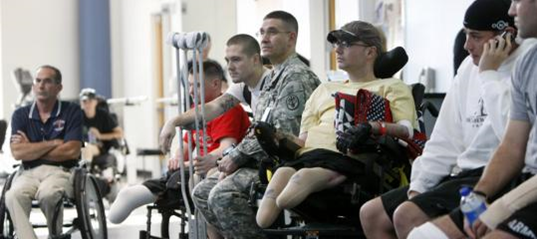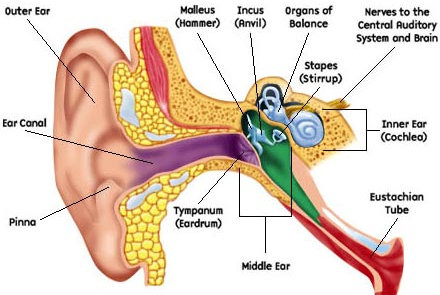SERVING
Those That
SERVED
PTSD
Post traumatic stress disorder, also known as PTSD, is among only a few mental disorders that are triggered by a disturbing outside event, unlike other psychiatric disorders such as depression.
Type II Diabetes
Type 2 diabetes, once known as adult-onset or noninsulin-dependent diabetes, is a chronic condition that affects the way your body metabolizes sugar (glucose), your body's main source of fuel.
Tinnitus
Tinnitus, is a ringing, swishing, buzzing, or other type of noise that seems to originate in the ear or head. The sound may seem to come from one ear or both, from inside the head, or from a distance.


Presumptive Disabilities


1. Tinnitus
2. Hearing Loss
3. Limitation of Flexion of the Knee
4. Post Traumatic Stress Disorder (PTSD)
5. Lumbosacral or Cervical Strain
6. Scars, General
7. Paralysis of the Sciatic Nerve (Sciatica)
8. Limitation of Range of Motion of the Ankle
9. Migraines (Headaches)
10. Limitation of Motion of the Arm
11. Degenerative Arthritis of the Spine
12. Sleep Apnea
13. Traumatic Brain Injury (TBI)
14. Major Depressive Disorder
15. Asthma
16. Diabetes Type 2
17. Cancer
18. Generalized Anxiety Disorder
19. Pes Planus (Flat Feet)
20. Radiculopathy
21. Adjustment Disorder
22. Somatic Symptom Disorder (Chronic Pain Syndrome)
23. Gastroesophageal Reflex Disease (GERD)
24. Irritable Bowel Syndrome (IBS)
25. Erectile Dysfunction
2023 Top 50 Veteran Disabilities
26. Plantar Fasciitis
27. Arthritis
28. Hypertension (High Blood Pressure)
29. Degenerative Disc Disease (DDD)
30. Carpal Tunnel Syndrome (CTS)
31. Chronic Fatigue Syndrome (CFS)
32. Fibromyalgia
33. Eczema
34. Allergic Rhinitis (Hay Fever)
35. Sinusitis
36. Meniere’s Syndrome
37. Arteriosclerotic Heart Disease (Coronary Artery Disease)
38. Chronic Conjunctivitis
39. Limited Motion of the Jaw (Temporomandibular Disorder)
40. Hiatal Hernia
41. Hemorrhoids
42. Varicose Veins
43. Nephrolithiasis (Kidney Stones)
44. Hypothyroidism
45. Anemia
46. Peripheral Neuropathy
47. Prostate Gland Injuries
48. Ischemic Heart Disease (IHD)
49. Vertigo
50. Urinary Incontinence
Disease Highlight
Intervertebral Disc Syndrome (IVDS) is a general term for conditions involving degeneration, herniation, or damage to the intervertebral discs—those cushion-like structures between the vertebrae of the spine.
It includes conditions like:
-Herniated discs (slipped or ruptured disc)
-Degenerative disc disease
-Bulging discs
-Sciatica caused by disc compression
These discs act as shock absorbers for the spine, and when they're compromised, they can press on nerves or cause inflammation, leading to pain, numbness, tingling, or even muscle weakness, depending on the location (e.g., cervical, thoracic, lumbar spine).
What are Flare-Ups in IVDS?
A flare-up refers to a sudden increase or worsening of symptoms. It can happen sporadically and may last from a few hours to several weeks.
Common flare-up symptoms:
-Increased pain (sharp, burning, or radiating)
-Heightened stiffness or reduced mobility
-Spasms or tightness in surrounding muscles
-Nerve symptoms, like tingling or numbness, especially down the legs (sciatica)
Triggers for flare-ups:
-Overexertion or lifting heavy objects
-Poor posture
-Sudden movements or twisting
-Prolonged sitting or standing
-Cold or damp weather
-Stress (mental or physical)
How IVDS Affects Veterans
Many veterans develop IVDS due to:
-Repetitive physical strain (lifting heavy equipment, rucking)
-High-impact activities (jumping, carrying loads during training/deployment)
-Injuries from combat, training accidents, or vehicle impacts
-Wearing heavy body armor for extended periods
Over time, these stresses can degenerate the spinal discs or lead to disc herniation, causing chronic back pain, s ciatica, or limited mobility — all of which can severely affect a veteran's quality of life and ability to work.
The VA rates IVDS based on incapacitating episodes:
-60% for six or more weeks per year
-40% for four to six weeks
-20% for two to four weeks
-10% for at least one but less than two weeks